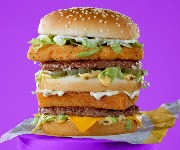Secrets of our success: Green & Black's

How this beloved chocolate brand has racked up 24 years and 20 flavours.
The Green & Black's story is a lesson in seizing the day.
In 1991, Jo Fairley tried a piece of chocolate made from organic cacao beans which had been sent to her husband Craig Sams, founder of organic food company Whole Earth. Convinced other chocoholics would share her appreciation, she made sure they could.
A trip to Belize followed, where Craig and Jo met a group of smallholder farmers who had been farming Trinitario cocoa beans for a chocolate company who had then pulled out of the venture. They bought the beans and created the Maya Gold chocolate bar, a flavour inspired by a traditional spiced Mayan chocolate drink. And so Green and Black’s was born. It was the world’s first Fairtrade brand, which has stuck to its principles even after buyouts by Cadbury and its subsequent takeover by Kraft.
The beginning
What gave Jo the idea of turning a one-off tasting into a product? “Coming across the world’s first supply of certified organic cacao beans made me want to create a 70% chocolate, at a time when the highest available was 55%.”
And doing it ethically was a given. “Fairtrade and organic was in our DNA. It was only when we looked back we realised this was pioneering. It helped we didn’t know how successful it would be, because we just followed our instincts and had fun. Otherwise I might have done things differently – and it might not have been so successful.”
The success certainly wasn’t a given. “We were told the British wouldn’t eat dark chocolate,” she reflects. “Then there was political uprising in Togo, where we got our beans, ending with a blockade on the ports so we couldn’t get our cocoa out of west Africa.”
Way out west
The Caribbean proved a salvation, but it came with its own set of issues, namely hurricanes. “It’s not something you think you’ll worry about when you set up a chocolate company,” Jo says now.
When Green & Black’s first launched, certified organic cacao wasn’t sold through traders. “We sourced from the farmers which made for very close, symbiotic relationships,” Jo explains. “From the word go, our relationship with farmers was crucial, and blossomed into friendships. That’s how closely we knew them.”
The future is THIN
Twenty-four years and over 20 flavours later, the company continues to evolve. The latest addition to the family is Green & Black’s Organic THIN. In the making for two years, chef Brandt Maybury, Green & Black’s Taste Specialist and dubbed the real-life Willy Wonka, tells us how they created this new bar, available in dark, milk, mint and salted caramel.
“We wanted a thinner, more delicate piece of chocolate as we know some people prefer that,” says Brandt. “This meant we had to find the right machinery and moulds to make a bar that’s thin but doesn’t break too easily.”
Developing the two new flavours, mint and salted caramel, was the lengthiest aspect but Brandt’s background as a chef proves key when it comes to understanding flavours. “For example, to create the exact salted caramel flavour we wanted, I made a salted caramel dessert which then became the benchmark for what I wanted to replicate in the bar. Some salted caramel bars either don’t taste like true caramel or don’t have enough of a salt hit.”
Future flavours
Salted caramel has been a huge success for chocolatiers, so what’s next? “People are really enjoying experimenting with sweet and savoury combinations,” says Brandt. “That’s going to grow with the likes of salted popcorn, pretzel, and even marmite chocolate.”
Fairtrade farming
Trends come and go, but being organic and ethical has remained the underlying principle. It has taken time and dedication to continue producing quality, tasty chocolate but Green and Black’s close relationship with producers has been part of this. “We've been working with our farmers in the Dominican Republic since the 1990s,” says Brandt, “at a time when native cocoa wasn't even particularly prized for flavour. We worked with them on processes such as pruning, fermentation and drying of the cocoa bean so we can improve their yields and enhance the flavour. We now have over 8,000 farmers growing organic 'fine flavour' cocoa all over the world. Seeing their communities flourish because of this, with new schools and local businesses, brings a lot of pride and satisfaction to the team."
Doing good while making money seems an ideal business plan, so how does a company like Green & Black’s persuade others to go down this road? “I believe that Fairtrade really works,” says Jo. “It’s transformed lives and communities around the world. If a product can be Fairtrade, why not? Surely we all want to do good through doing business, as my old mentor Anita Roddick showed me.”
And her advice to would-be organic and Fairtrade brands? “The quality has to be as good as, or better, than what’s already out there. People will only shop with their heart the first time. After that, they need to know it’s going to make their tastebuds happy.”
You might also enjoy:
All our chocolate recipes and features
Lovefood meets... a cave-maturing, carbon-neutral cheesemaker
Most Recent
Comments
Be the first to comment
Do you want to comment on this article? You need to be signed in for this feature








